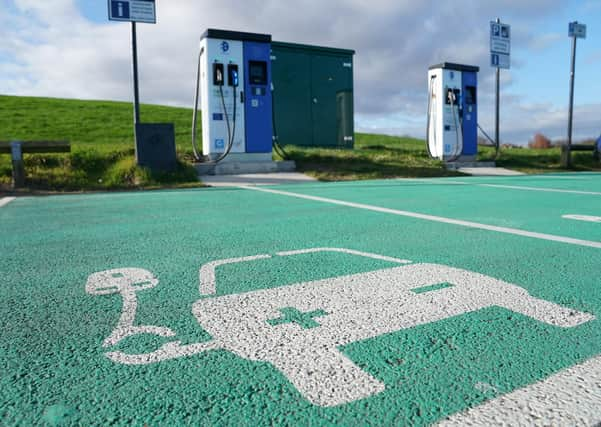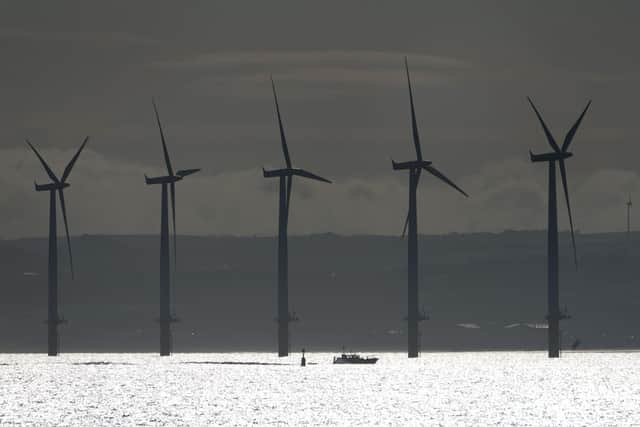The serious bumps in the road to a greener future - Bill Carmichael


It is an incredibly bold move in a time of economic meltdown during a raging pandemic, and the £4bn cost will, with little doubt, be added to the enormous national debt that now stands at more than £2 trillion and will have to be paid back by our children, grandchildren and great grandchildren.
But immediately many environmental campaigners denounced the Government’s move, arguing it wasn’t doing enough and that even more had to be spent to reduce carbon emissions. For some people, no matter what the Government does, and regardless of the cost, it will never be enough.
Advertisement
Hide AdAdvertisement
Hide AdThere are certainly upsides to phasing out carbon fuelled vehicles. For example, electric cars are cheaper to run and emit less pollution, but there are also serious problems. The picture is in fact incredibly complex and far less straightforward than the zealous eco warriors would have you believe.


And governments have a very poor record in telling people what cars they can drive. Let’s not forget the “dash for diesel” inspired by the then Chancellor Gordon Brown in 2001, because diesel engines were thought to be cleaner and greener. They turned out to be neither – although they emitted less carbon dioxide, they emitted far more nitrogen oxide and particulates and their increase led to a significant deterioration in air quality in many areas. But millions of motorists were encouraged to switch to diesel, and then not long after they were denounced for trashing the planet.
Similarly, there are many hidden costs in promoting electric vehicles. In fact, if the electricity required to charge the vehicles comes from coal and gas fired power stations we could actually see an increase in carbon emissions.
The Government’s answer is to massively increase off-shore wind and nuclear power generation, which is fine as both are clean, green and safe, but both are more expensive ways of producing power and will push up the cost to consumers.
Advertisement
Hide AdAdvertisement
Hide AdAnd there is also the question of capacity. If everyone is expected to switch to electric vehicles we are going to need an estimated extra 18GW of power generation. The new £20bn Hinkley Point nuclear power station will produce about 3.2GW once it opens in five years’ time. So we are going to need another six similar stations in the next ten years simply to meet the demand.
Environmentalists are going to have to accept that if their green dream is to become a reality, there will have to be huge increases in nuclear energy production. Intermittent wind and solar just won’t be enough.
Electric vehicles also have a huge social and environmental cost, particularly in the developing world, and mainly in the manufacture of the batteries.
For example, two-thirds of the global production of the mineral cobalt, used in the batteries, comes from Democratic Republic of Congo, where 40,000 children work in extremely dangerous conditions, according to Unicef, and where toxic chemicals are having a devastating impact on the country’s water supplies.
Advertisement
Hide AdAdvertisement
Hide AdSimilarly, much of the lithium used in the batteries comes from Argentina, Bolivia and Chile, where the mines are taking desperately needed water from indigenous farmers and herders in one of the driest regions of the world.
In short, driving an electric vehicle may allow you to feel good about yourself and to show off your green credentials, but the truth is they are extremely damaging to some of the world’s poorest people.
And it is mainly the rich in this country that can indulge in electric vehicles. The Tesla Model 3 costs a whopping £39,000 and the Nissan Leaf costs more than £28,000. In contrast, a new petrol Ford Fiesta is less than £15,000, and far less if you buy second hand. The Government’s move may result in motoring becoming exclusively the preserve of the rich – as it was 100 years ago.
So three cheers for the “green revolution” provided you are happy with a massive increase in national debt, a big expansion of nuclear power, that many ordinary people will be priced off the roads, an increase in child labour and the huge damage caused to the world’s poorest in the developing world. Still think it’s a good idea?
Advertisement
Hide AdAdvertisement
Hide AdSupport The Yorkshire Post and become a subscriber today. Your subscription will help us to continue to bring quality news to the people of Yorkshire. In return, you’ll see fewer ads on site, get free access to our app and receive exclusive members-only offers. Click here to subscribe.